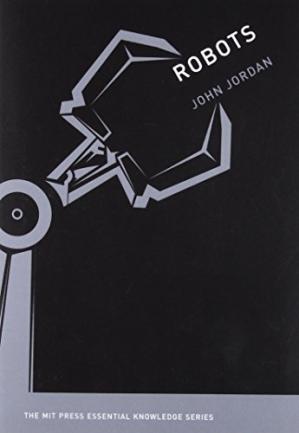Robots |

|
 Diese Seite wurde seit 1 Jahr inhaltlich nicht mehr aktualisiert.
Unter Umständen ist sie nicht mehr aktuell.
Diese Seite wurde seit 1 Jahr inhaltlich nicht mehr aktualisiert.
Unter Umständen ist sie nicht mehr aktuell.
 Zusammenfassungen
Zusammenfassungen
 An accessible and engaging account of robots, covering the current state of the field, the fantasies of popular culture, and implications for life and work.
An accessible and engaging account of robots, covering the current state of the field, the fantasies of popular culture, and implications for life and work.
Robots are entering the mainstream. Technologies have advanced to the point of mass commercialization -- Roomba, for example -- and adoption by governments -- most notably, their use of drones. Meanwhile, these devices are being received by a public whose main sources of information about robots are the fantasies of popular culture. We know a lot about C-3PO and Robocop but not much about Atlas, Motoman, Kiva, or Beam -- real-life robots that are reinventing warfare, the industrial workplace, and collaboration. In this book, technology analyst John Jordan offers an accessible and engaging introduction to robots and robotics, covering state-of-the-art applications, economic implications, and cultural context.
Jordan chronicles the prehistory of robots and the treatment of robots in science fiction, movies, and television -- from the outsized influence of Mary Shelley's Frankenstein to Isaac Asimov's I, Robot (in which Asimov coined the term "robotics"). He offers a guided tour of robotics today, describing the components of robots, the complicating factors that make robotics so challenging, and such applications as driverless cars, unmanned warfare, and robots on the assembly line.
Roboticists draw on such technical fields as power management, materials science, and artificial intelligence. Jordan points out, however, that robotics design decisions also embody such nontechnical elements as value judgments, professional aspirations, and ethical assumptions, and raise questions that involve law, belief, economics, education, public safety, and human identity. Robots will be neither our slaves nor our overlords; instead, they are rapidly becoming our close companions, working in partnership with us -- whether in a factory, on a highway, or as a prosthetic device. Given these profound changes to human work and life, Jordan argues that robotics is too important to be left solely to roboticists.
 Dieses Buch erwähnt ...
Dieses Buch erwähnt ...
 Personen KB IB clear | Douglas Hofstadter , Stanley Kubrick , Elon Musk , Donald A. Norman , Sebastian Thrun | ||||||||||||||||||||||||||||||||||||
 Begriffe KB IB clear |  Aibo
, Aibo
,  Künstliche Intelligenz (KI / AI) Künstliche Intelligenz (KI / AI) artificial intelligence
, artificial intelligence
,  Roboter Roboter robot
, social network analysissocial network analysis
, stuxnet
, uncanny valley robot
, social network analysissocial network analysis
, stuxnet
, uncanny valley
| ||||||||||||||||||||||||||||||||||||
 Bücher |
|
 Zitationsgraph
Zitationsgraph
 Zitationsgraph (Beta-Test mit vis.js)
Zitationsgraph (Beta-Test mit vis.js)
 Volltext dieses Dokuments
Volltext dieses Dokuments
 Bibliographisches
Bibliographisches 
 Beat und dieses Buch
Beat und dieses Buch
 Beat hat dieses Buch während seiner Zeit am Institut für Medien und Schule (IMS) ins Biblionetz aufgenommen. Beat besitzt kein physisches, aber ein digitales Exemplar. (das er aber aus Urheberrechtsgründen nicht einfach weitergeben darf). Es gibt bisher nur wenige Objekte im Biblionetz, die dieses Werk zitieren. Beat selbst sagt, er habe dieses Dokument nicht gelesen.
Beat hat dieses Buch während seiner Zeit am Institut für Medien und Schule (IMS) ins Biblionetz aufgenommen. Beat besitzt kein physisches, aber ein digitales Exemplar. (das er aber aus Urheberrechtsgründen nicht einfach weitergeben darf). Es gibt bisher nur wenige Objekte im Biblionetz, die dieses Werk zitieren. Beat selbst sagt, er habe dieses Dokument nicht gelesen.

















 Biblionetz-History
Biblionetz-History